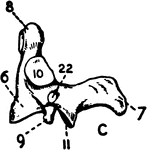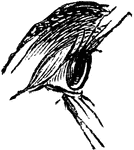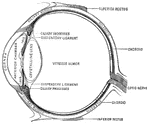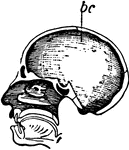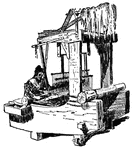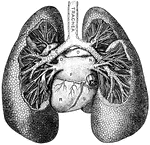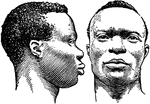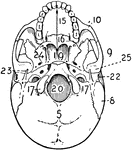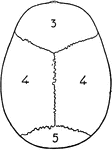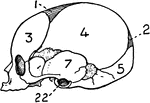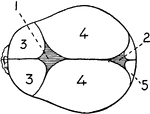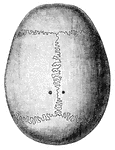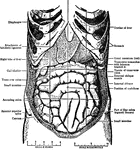
Abdomen
"The Abdominal Viscera in situ, as seen when the abdomin is laid open and the great omentum…

Abdominal
"In human anatomy, certain regions into which the abdomen is arbitrarily divided for the purpose of…

Achillles tendon
"Tendons are white, glistening cords, or straps, which connect the muscles with the bones." —…
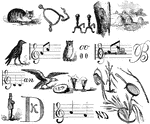
Animal Rebus
"Cats purr, dogs bark, cocks crow, a cow lows, a donkey brays, an eagle screams, parrots talk, spiders…

Muscular Cycle of the Biceps
A diagram showing the muscular cycle form by the biceps or flexor muscle, and the triceps or extensor…

Superficial Muscles of the Body
"A single muscle rarely or never contracts alone, but always in harmony with a number of other muscles.…

Bones of the Shoulder and Upper Extremity - Front View
"A, acromion; C, coracoid; CA, carpus; CL, clavicle; H, humerus; M, metacarpals; O, ventral surface…
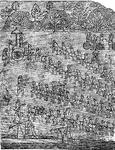
Winged Bull
An ancient Assyrian wall relief, depicting the symbol of a winged bull with the head of a human male.

Early Races, Caucasian
in early development of race, the Caucasian type consisted of Mediterranean men (Jews of Algiers), Mediterranean…
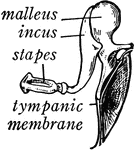
Bones of the Ear
"Across the middle ear a chain of three small bones stretches from the tympanic membrane to the inner…

Ligaments of the Foot and Ankle
"The bones are fastened together, kept in place, and their movements limited, by tough and strong bands,…
Bones of the Foot
"The foot is built in the form of a half-dome or half-arch. This is to afford a broad, strong support…

Racial Types From Egyptian Paintings
Early developments of racial types, a tomb paint from an Egyptian tomb.

Powerful Ligament at the Hip Joint
"The bones are fastened together, kept in place, and their movements limited, by tough and strong bands,…
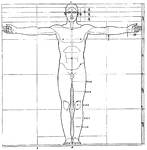
Proportions of human figure
"The proportions of the human figure. As handed down to us by Vitruvius and described by Joseph Bonomi."…
Human Leg (Front View)
This illustration shows a front view of a human leg. P. Pelvis, FE. Femur, TI. Tibia, FI. Fibula, TA.…

Human Leg (Front View), and Comparative Diagrams showing Modifications of the Leg
This illustration shows a human leg (front view), and comparative diagrams showing modifications of…

Human Leg (Side View)
This illustration shows a side view of a human leg. P. Pelvis, FE. Femur, TI. Tibia, FI. Fibula, TA.…
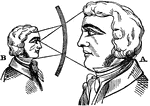
Magnified Face in a Concave Mirror
"When the concave mirror is large, say six inches in diameter, and eight or ten inches focal distance,…

Early Races, Mongolian
in early development of race, the Mongolian type consistent of Kalmucks, Chinese, and Amerindians.

Muscles
A frontal view of the human muscles. The right half shows superficial muscles and the left half shows…
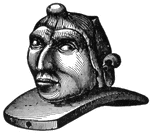
Indian Pipe Shaped as Human Head
Indian pipe in the shape of a human head, used for smoking tobacco.

Broken Radius
"When a bone is broken, blood trickles out between the injured parts, and afterwards gives place to…

Human skeleton
"The human body, like a great building, has a framework which gives the body its shape and provides…

Human skeleton
"There are in all two hundred and six seperate bones in the adult skelton. The teeth are not bones,…
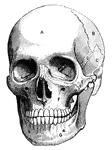
Human skull
"A, frontal bone; B, parietal bone; C, temporal bone; D, sphenoid bone; E, malar bone; F, upper jawbone;…

Transverse section of the small intestine
"In the figure on the left are seen the artery and vein of a villus. In the right figure are represented…
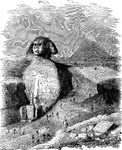
The Great Sphinx at Giza
A statue built on the Giza Plateau in Giza, Egypt, consisting of a lion with a human head. The Sphinx…
Spinal column
"The spine or backbone, serves as a support for the whole body. It is made up of a number of…

Stone Carvings of Sumerian Warriors
Perhaps the earliest people to form real cities in the western region of the world, were a people of…
Overhand Swimming
"The overhead movement enables the swimmer to throw himself forward on the water, and to move his arms…
Side-Stroke Swimming
"An improvement on the foregoing for long distances is the known as the side stroke. In this method,…
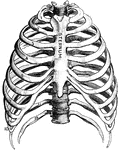
Thorax
"The ribs are long, flat, and curved bones which bend round the chest somewhat like the hoops…

Broken Tibia
"When a bone is broken, blood trickles out between the injured parts, and afterwards gives place to…
